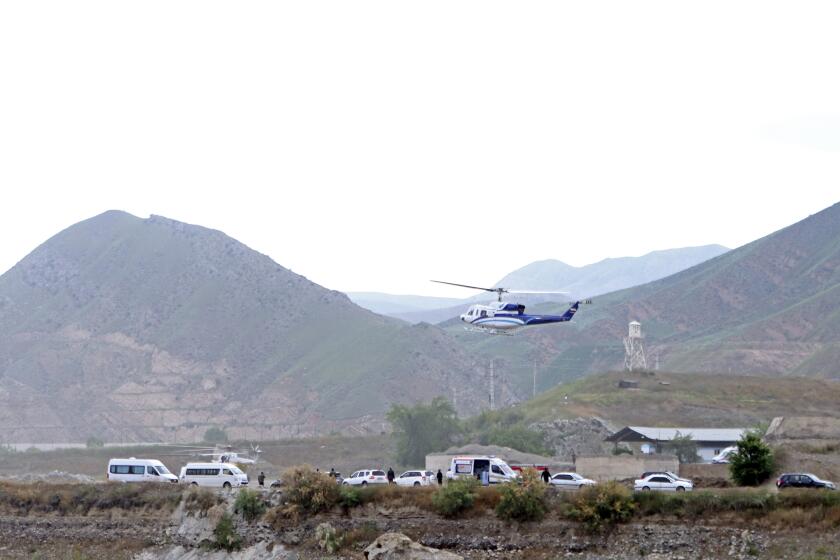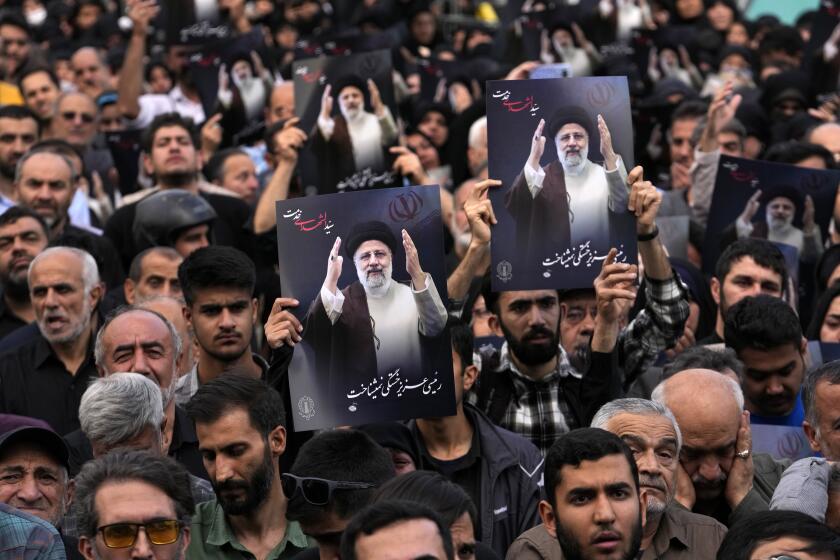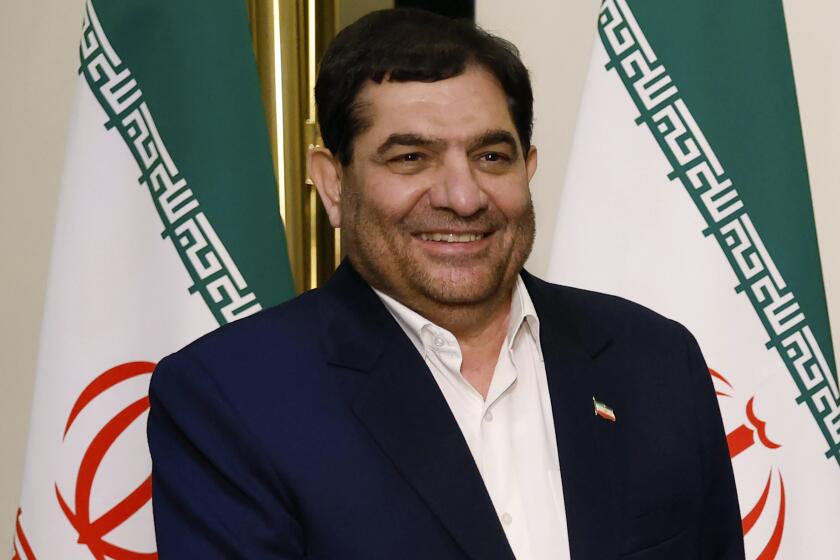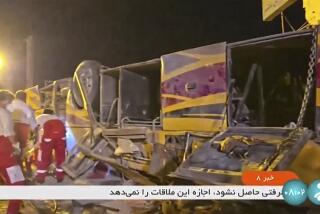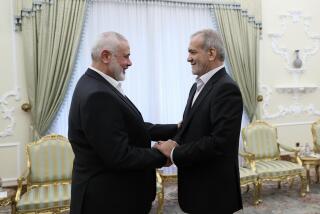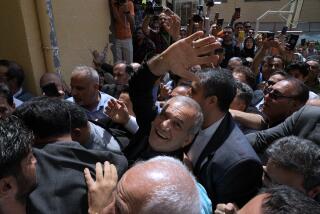Mourners begin days of funerals for Iran’s president and others killed in helicopter crash
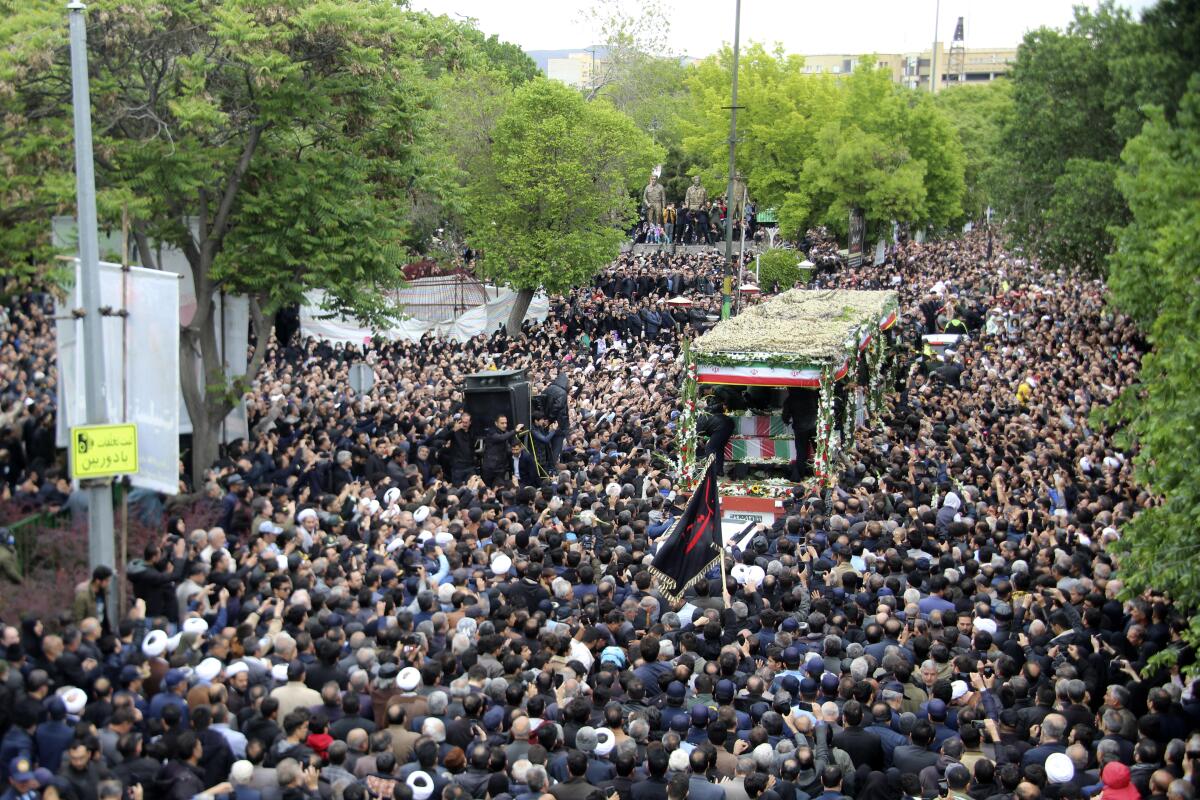
DUBAI — Mourners wearing black began gathering Tuesday for days of funerals and processions for Iran’s president, foreign minister and others killed in a helicopter crash — a government-led series of ceremonies aimed at honoring the dead and projecting unity in an unsettled Middle East.
For Iran’s Shiite theocracy, mass demonstrations have been crucial since millions thronged the streets of Tehran to welcome Ayatollah Ruhollah Khomeini in 1979 during the Islamic Revolution, and attended his funeral 10 years later.
An estimated 1 million turned out in 2020 for processions for Revolutionary Guard Gen. Qassem Suleimani, who was slain in a U.S. drone strike in Baghdad.
Whether the ceremonies for President Ebrahim Raisi, Foreign Minister Hossein Amir-Abdollahian and the others who died in Sunday’s crash draw the same crowds remains in question, particularly as Raisi won office in the lowest-turnout presidential election in Iran’s history and presided over sweeping crackdowns on dissent.
Prosecutors have warned against public signs of celebrating Raisi’s death, and a heavy security presence has been seen on the streets of Tehran since the crash.
Raisi, 63, had been discussed as a possible successor for Iran’s supreme leader, the 85-year-old Ayatollah Ali Khamenei. With Raisi’s death, there is no heir-apparent cleric for the presidency ahead of a planned June 28 election.
“Raisi’s death comes at a moment when the Islamist regime is consolidated,” wrote Alex Vatanka, an Iran expert at the Middle East Institute. “In short, there will be no power vacuum in Tehran; nonetheless, post-Khamenei Iran suddenly looks far less predictable than it did just a few days ago.”
The helicopter that crashed Sunday in a remote, mountainous region was carrying Iranian President Ebrahim Raisi, Foreign Minister Hossein Amir-Abdollahian.
A procession Tuesday morning led by a semitruck carrying the caskets moved through the narrow streets of downtown Tabriz, the closest major city to the site of Sunday’s crash.
Thousands in black walked beside the coffins, some throwing flowers up to them as an emcee wept through a loudspeaker for men he described as martyrs.
On Wednesday, a funeral presided over by Khamenei will turn into another procession.
The caskets later arrived to an honor guard at the Tehran airport, then were sent to the holy Shiite seminary city of Qom. There, a semitruck surrounded by soldiers in fatigues was swarmed by a crowd of mourners; some beat their chests and wailed. The truck later picked up speed while others stood alongside the road watching.
The bodies were to be returned to Tehran on Tuesday night for services Wednesday.
It remains unclear what international presence the funeral will draw, as Raisi faced U.S. sanctions for his part in mass executions in 1988 and for abuses targeting protesters and dissidents while leading Iran’s judiciary. Iran under Raisi also shipped bomb-carrying drones to Russia for use in the war on Ukraine.
“I don’t feel comfortable sending condolences while Iran is sending drones that are used against civilians in Ukraine,” Lithuanian Foreign Minister Gabrielius Landsbergis wrote on X.
U.K. Security Minister Tom Tugendhat echoed that, posting to the social media platform: “President Raisi’s regime has murdered thousands at home, and targeted people here in Britain and across Europe. I will not mourn him.”
Iran has spent decades supporting armed groups and militants in Lebanon, Syria, Iraq, Yemen and Palestinian territories, allowing it to project power.
A procession is planned for Thursday in Raisi’s hometown of Birjand, followed by a funeral and burial at the Imam Reza shrine in the holy city of Mashhad.
The Imam Reza shrine is visited by millions of pilgrims each year. Over the centuries, it has served as the final burial site for heroes in Persian history. It’s a high, rare honor in the faith to be buried there. Mohammed Ali Rajai, the only other Iranian president to die in office, killed in a 1981 bombing, was buried in Tehran.
Iran’s theocracy declared five days of mourning, encouraging citizens to attend the public mourning sessions.
Typically, government employees and schoolchildren attend such events en masse, while others take part out of patriotism, curiosity or to witness historic events.
Across Iran, the rural population more closely embraces the Shiite faith and the government. Tehran residents generally have a far different view of Raisi and his government’s policies as mass protests have roiled the capital for years.
The most recent involved the 2022 death of Mahsa Amini, a woman detained over her allegedly loose headscarf, or hijab. The months-long security crackdown that followed the demonstrations killed more than 500 people and saw 22,000 detained. In March, a United Nations investigative panel found that Iran was responsible for the “physical violence” that led to Amini’s death.
Iran’s first vice president, Mohammad Mokhber, has been appointed president of the Islamic Republic after the death of President Ebrahim Raisi in a helicopter crash.
Meanwhile, the local currency, the rial, has cratered since the collapse of the country’s nuclear deal with world powers, destroying Iranians’ savings and pensions.
As news of the helicopter crash circulated Sunday night, anti-government chants could be heard. Critical messages and dark jokes about the crash circulated online.
Iran’s top prosecutor has issued an order demanding that cases be filed against those “publishing false content, lies and insults” against Raisi and the others killed in the crash, according to the semiofficial ISNA news agency.
Iran’s government has not announced the cause of the crash of the decades-old helicopter, which occurred in a foggy mountain range.
Iran’s military, not its civil aviation authority, will investigate and produce a report, authorities say. Iran’s civil air crash investigators faced widespread international criticism over their reports on the downing of a Ukrainian passenger plane by an air defense battery in 2020 after Suleimani’s killing.
Other Iranian presidents, including hard-liner Mahmoud Ahmadinejad and Abolhassan Bani-Sadr, survived helicopter crashes while in office.
Meanwhile Tuesday, Iran’s new Assembly of Experts opened its first session after an election that decided its members. Both Raisi and Tabriz Friday prayer leader Mohammad Ali Ale-Heshem, who also died in the crash, had been members.
A flower-ringed portrait sat on the chair Raisi would have occupied at the meeting of the 88-member panel, which is tasked with selecting the next supreme leader. Also attending was Iran’s acting president, Mohammad Mokhber.
Gambrell writes for the Associated Press.
More to Read
Sign up for Essential California
The most important California stories and recommendations in your inbox every morning.
You may occasionally receive promotional content from the Los Angeles Times.
